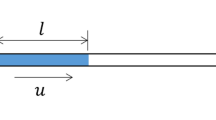Abstract
A semi-empirical graphical method to predict the performance of oxygenators using straight and parallel capillary tubes has been developed from a mathematical model and an extensive amount ofin vitro data obtained under precisely controlled conditions. This graphical technique predicts the performance of a given oxygenator for exchange of both oxygen and carbon dioxide for a wide range of blood flows and input-blood conditions, and greatly simplifies the analysis of data taken in evaluation procedures where precise control of test conditions is not achieved. Performance predictions for capillary-tube oxygenators obtained by this method are supported by preliminaryin vivo data, as well as by extensivein vitro data. The calculation also provides a simple means of designing or selecting a capillary oxygenator for application under known operating conditions. This method has indicated that, for the same blood flow rate, oxygenators staged in series are significantly more effective than when connected in parallel. This prediction has also been verified in the laboratory.
Sommaire
On a développé à l'aide de tuyaux capillaires droits et parallèles, une méthode graphique semiempirique pour prédire la performance d'oxygénateurs, grâce à un modèle mathématique et à une quantité importante de données obtenues dans des conditions contrôlées avec précision. Cette méthode graphique prédit la performance d'un oxygénateur donné pour l'échange de l'oxygène et du gaz carbonique d'une gamme importante de débits sanguins et d'entrée de sang, tout en simplifiant beaucoup l'analyse des résultats relevés par les procédés d'évaluation où un contrôle précis des conditions d'essai n'est pas atteint. Les prédictions de performance des oxygénateursl tuyau capillaire obtenues par(cette méthode sont supportées par des résultats préliminaires in vivo ainsi qu'une quantité importante de résultats in vitro. Les calculs fournissent aussi un moyen simple de construire et de choisir un oxygénateur capillaire à utiliser sous conditions opératoires connues. Cette méthode indiqua que pour un même débit sanguin, les oxygénateurs montés en série sont beaucoup plus efficaces que lorsqu'ils sont montés en parallèle. Cette prédiction fut aussi vérifiée en laboratoire.
Zusammenfassung
Eine halbempirische, grafische Methode, die Leistung von Oxygenatoren vorherzusagen, welche gerade und parallele Kapillarröhrchen benutzen, wurde von einem mathematischen Modell entwickelt. Ein umfangreiche Anzahl von in vitro Daten wurde unter genau kontrollierten Verhältnissen gewonnen. Diese grafische Methode sagt die Leistung eines gegebenen Oxygenators zum Austausch von Sauerstoff und Kohlendioxyd für eine grosse Reihe von Blutströmungs- und Bluteingabe-Zuständen voraus. Damit vereinfacht sie sehr die Analyse von Daten, die im Auswertungsverfahren gewonnen wurden, wo keine genaue Kontrolle der Versuchsbedingungen erreicht wird. Die so erhaltenen Leistungsvorhersagungen für Kapillarrohr-Oxygenatoren werden durch einleitende in vivo Daten wie auch zahlreiche in vitro Daten unterstützt. Diese Berechnung macht es auch leichter, einen Kapillaroxygenator zur Anwendung unter bekannten Betriebsbedingungen zu entwerfen oder auszuwählen. Diese Methode hat gezeigt, dass für eine gleiche Blutströmungsrate serienweise abgestufte Oxygenatoren bedeutend wirksamer sind, als parallel verdundene. Diese Vorhersage wurde auch im Labor bewiesen.
Similar content being viewed by others
References
Calkins, J. M. (1971) Nonequilibrium CO2 transfer in tubular membrane oxygenators. Ph.D. Thesis, University of Maryland.
Comroe, J. H., Foster, R. E., DuBois, A. B., Briscoe, W. A. andCarlsen, E. (1962)The Lung, p. 154. Year Book Medical Publishers, Inc.
Galletti, P. M., Richardson, P. D. andSnider, M. T. (1971) Blood oxygenator testing and evaluation. N.I.H. Annual Report NIH-69-2047-1.
Galletti, P. M., Snider, M. T. andSilbert-Aiden, D. (1966) Gas permeability of plastic membranes for artificial lungs.Med. Res. Eng. 5 (2), 20–23.
Hershey, D. andKarnant, T. (1968) Diffusion coefficients for oxygen transport in whole blood.A.I.Ch.E.J. 14 (6), 969.
Lanham, C. E., Grose, R. M. andVillarroel, F. (1971) The precise control of blood-gas concentrations and blood flowrate as a key to oxygenator evaluation.Proc. Symp. on Flow. Pittsburgh, Pennsylvania (in press).
Villarroel, F., Lanham, C. E., Bischoff, K. B., Regan, T. M. andCalkins, J. M. (1970) A mathematical model for the prediction of oxygen, carbon dioxide, and pH with augmented diffusion in capillary blood oxygenators.In:Blood oxygenation. Ed.D. Hershey (1966). Plenum Press, New York.
Author information
Authors and Affiliations
Rights and permissions
About this article
Cite this article
Villarroel, F., Lanham, C.E. A design calculation method for capillary-tube oxygenators. Med. & biol. Engng. 11, 732–742 (1973). https://doi.org/10.1007/BF02478661
Received:
Accepted:
Issue Date:
DOI: https://doi.org/10.1007/BF02478661




